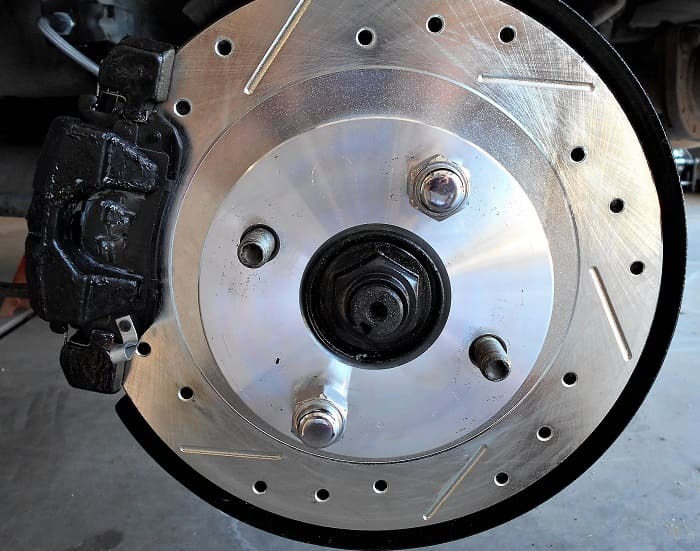
 Data Structure
Data Structure Networking
Networking RDBMS
RDBMS Operating System
Operating System Java
Java MS Excel
MS Excel iOS
iOS HTML
HTML CSS
CSS Android
Android Python
Python C Programming
C Programming C++
C++ C#
C# MongoDB
MongoDB MySQL
MySQL Javascript
Javascript PHP
PHP
- Selected Reading
- UPSC IAS Exams Notes
- Developer's Best Practices
- Questions and Answers
- Effective Resume Writing
- HR Interview Questions
- Computer Glossary
- Who is Who
What is the full form of BMEP?
Introduction
Brake Mean Effective Pressure (BMEP) referred to as an average value of the pressure throughout the cylinder, will produce an engine which possesses the same amount of braking power as an actual engine when applied uniformly from TDC to BDC in place of the power stroke.

The engine's power stroke work-to-displacement ratio affects the braking mean effective pressure. To calculate BMEP, multiply the engine's net output of work by the displacement capacity of its cylinders. Pressure measurements like kilopascals (kPa) or pounds per square inch (psi) are used to express the result.
To get it BMEP, it's helpful to to begin with characterize a few related terms
Gross Mean Effective Pressure (GMEP) This is the average pressure applied on the piston during the power stroke, including the pressure losses due to friction and pumping losses.
Indicated Mean Effective Pressure (IMEP) This is often the average pressure applied on the piston during the power stroke, calculated from estimations of the pressure interior the engine's cylinders.
Friction Mean Effective Pressure (FMEP) Usually the average pressure lost due to friction between the engine's moving parts.
Pumping Mean Effective Pressure (PMEP) Usually the average pressure lost due to the engine's intake and exhaust forms, such as air stream resistance and pressure drop.
BMEP is the difference between GMEP and FMEP and is regularly utilized as a measure of engine proficiency. A higher BMEP shows a more effective engine, because it implies that the engine is creating more work per unit of fuel devoured.
BMEP is a useful metric for optimizing engine plan and execution in a range of applications. For illustration, in automotive motors, BMEP can be utilized to decide the optimal compression proportion and camshaft profile for the engine. In mechanical applications, BMEP can be utilized to optimize engine speed and load for most extreme productivity.
Brake mean effective pressure equation
The equation for calculating Brake Mean Effective Pressure (BMEP) is
$$\mathrm{BMEP =\frac{(Piston Force x Engine Speed)}{(Piston Force x Engine Speed)}}$$
where
Piston Force is the drive applied by the piston on the interfacing pole amid the power stroke.
Engine Speed is the rotational speed of the engine in revolutions per minute (RPM).
Displaced Volume is the full volume displaced by all of the engine's cylinders during one complete cycle.
Number of Cylinders is the total number of cylinders in the engine.
The resulting BMEP esteem is ordinarily expressed in units of pressure, such as pounds per square inch (psi) or kilopascals (kPa).
Brake mean effective pressure derivation
The derivation of Brake Mean Effective Pressure (BMEP) involves the calculation of the net work output of the engine and the displaced volume of the engine's cylinders.
The net work output of the engine is the contrast between the work done on the piston during the power stroke and the work required to overcome frictional losses in the engine. The work done on the piston during the power stroke can be calculated as the item of the piston force and the distance traveled by the piston during the power stroke. The work required to overcome frictional losses can be estimated using empirical formulas or experimental information.
The displaced volume of the engine's cylinders is the total volume displaced by all of the engine's cylinders during one total cycle. This can be calculated as the product of the piston relocation (i.e., the distance traveled by the piston amid one complete cycle) and the number of cylinders.
The BMEP is then calculated by dividing the net work output of the engine by the displaced volume of the engine's cylinders
$$\mathrm{BMEP =\frac{Net Work Output}{Displaced Volume}}$$
Substituting the expressions for net work output and displaced volume, we get
$$\mathrm{BMEP =\frac{[(Piston Force x Power Stroke Distance) - Frictional Losses]}{(Piston Displacement x Number of Cylinders)}}$$
where
Piston Force is the force applied by the cylinder on the connecting rod amid the power stroke.
Control Stroke Separate is the separate traveled by the cylinder amid the control stroke.
Frictional Losses is the work required to overcome frictional losses in the engine.
Piston Displacement is the remove traveled by the piston amid one complete cycle.
Number of Cylinders is the total number of cylinders in the motor.
The resulting BMEP value is typically communicated in units of pressure, such as pounds per square inch (psi) or kilopascals (kPa).
Significance of brake mean effective pressure
Brake Mean Effective Pressure (BMEP) is a basic parameter for assessing engine execution, productivity, and power yield. A few of the significant uses of BMEP are
Engine Plan: BMEP is an imperative metric for planning engines for ideal execution. By analyzing BMEP, engineers can decide the optimal compression ratio, camshaft profile, and other engine parameters to attain higher productivity and power output.
Performance Assessment: BMEP is utilized to assess the performance of engines, especially in the automotive and aviation businesses. By analyzing BMEP values, engineers can decide the greatest power output of an engine and distinguish potential ranges for change.
Fuel Effectiveness: BMEP is an indicator of engine fuel effectiveness. Higher BMEP values demonstrate that an engine is creating more work per unit of fuel devoured. Engineers can utilize BMEP values to optimize engine speed and load for greatest productivity.

Emission Control: BMEP is used to optimize engine performance to meet emission standards. By optimizing the engine's BMEP esteem, engineers can diminish emissions of harmful pollutants, such as nitrogen oxides (NOx) and particulate matter.
Engine Maintenance: BMEP is a valuable metric for engine support. By observing BMEP values over time, engineers can distinguish changes in engine execution and recognize potential issues before they cause harm or failure.
Conclusion
Brake Mean Effective Pressure (BMEP) is a crucial statistic for evaluating engine output, effectiveness, and efficiency. The displacement volume of the the engine's cylinders is multiplied by the engine's net work efficiency to determine BMEP. The consequent BMEP value is employed to analyse performance, enhance fuel economy, reduce emissions, and maintain engine health while designing engines. Engineers may choose the best compression ratio, camshaft profile, and other engine characteristics to increase efficiency and produce more power by analysing BMEP readings. BMEP is a crucial factor in engine layout, evaluation of performance, fuel economy, emission management, and engine maintenance, resulting in engines that are more effective, potent, and dependable.
FAQs
Q1. What role does BMEP have in engine design?
Ans: The best compression ratio, camshaft profile, and other engine characteristics are identified using BMEP in order to increase engine efficiency and power output.
Q2. How is BMEP applied to performance evaluation?
Ans: BMEP is used to evaluate an engine's maximum power output and pinpoint possible areas for development.
Q3. How is BMEP applied to fuel economy?
Ans: BMEP is a measure of engine fuel effectiveness. An engine is performing more work per unit of fuel consumed when the BMEP value is higher.

